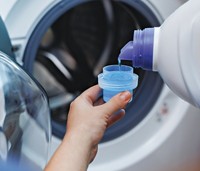Advertisement
Grab your lab coat. Let's get started
Welcome!
Welcome!
Create an account below to get 6 C&EN articles per month, receive newsletters and more - all free.
It seems this is your first time logging in online. Please enter the following information to continue.
As an ACS member you automatically get access to this site. All we need is few more details to create your reading experience.
Not you? Sign in with a different account.
Not you? Sign in with a different account.
ERROR 1
ERROR 1
ERROR 2
ERROR 2
ERROR 2
ERROR 2
ERROR 2
Password and Confirm password must match.
If you have an ACS member number, please enter it here so we can link this account to your membership. (optional)
ERROR 2
ACS values your privacy. By submitting your information, you are gaining access to C&EN and subscribing to our weekly newsletter. We use the information you provide to make your reading experience better, and we will never sell your data to third party members.
Environment
U.S. EPA lowers lead dust exposure levels
by Andrea Widener
June 30, 2018
| A version of this story appeared in
Volume 96, Issue 27

The U.S. Environmental Protection Agency wants to lower limits on lead dust on floors and window sills, the agency announced June 25. The new limits apply to pre-1978 housing and any child-occupied facility, such as a daycare or school. The proposed hazard standard for floors would fall from 430 µg/m² to 108 µg/m², and the acceptable level for windows would fall from 2,700 µg/m2 to 1,100 µg/m2. EPA Administrator Scott Pruitt has said that lead exposure is a priority at the agency, though most of his public statements focus on lead in drinking water rather than childhood exposure though paint. “Lead-contaminated dust from chipped and peeling lead-based paint is one of the most common causes of elevated blood lead levels in children,” Pruitt said in a statement announcing the lower levels. “Strengthening the standards for lead in dust is an important component of EPA’s strategy to curtail childhood lead exposure.” In 1978, EPA banned lead in residential paints, but it is still allowed in industrial paints. Lead is common in paints worldwide, especially in developing countries.




Join the conversation
Contact the reporter
Submit a Letter to the Editor for publication
Engage with us on Twitter